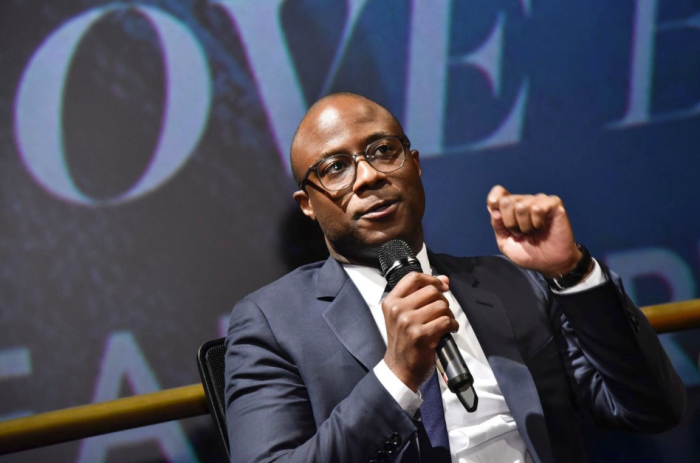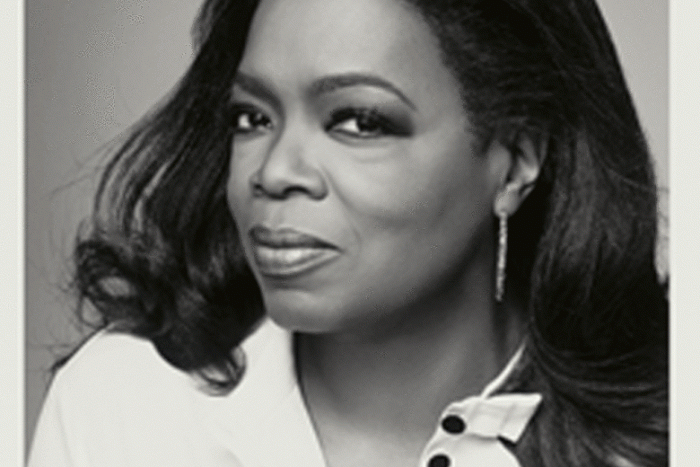ICYMI: Highlights from the week that was Oct. 28 – Nov. 3, 2018
No one can keep up with everything, so let us do it for you. We’ll gather the top Smithsonian stories from across the country and around the world each week so you’ll never be at a loss for conversation around the water cooler.
This week was marked by news from across the pond and from right in our own backyard.

‘If Beale Street Could Talk’ premiere brings James Baldwin’s Harlem to Washington
The Washington Post, October 28

Director Barry Jenkins participates in a Q&A session after Saturday night’s screening of “If Beale Street Could Talk,” which closed the inaugural Smithsonian African American Film Festival. (Kris Connor/Annapurna Pictures)
Barry Jenkins stood in front of a massive theater screen Saturday night at the National Air and Space Museum as he introduced his film “If Beale Street Could Talk,” the closing feature of the inaugural Smithsonian African American Film Festival. You almost had to squint to see Jenkins, who later tweeted that he looked like an ant from the audience’s perspective.
“This is the only Imax presentation of this film ever,” he said, laughing. Read more from Sonia Rao for The Washington Post.
National Portrait Gallery adds 28 famous faces
WTOP-Radio, October 29

Courtesy National Portrait Gallery
Twenty-eight new faces will line the walls and halls of the Smithsonian’s National Portrait gallery as a new exhibit titled “Recent Acquisitions” opens on Nov. 16.
The new pieces will be added to the gallery’s permanent collection.
This year’s presentation is the latest in an annual series called “Recent Aquisitions” and marks one of the many steps the gallery has taken to focus on inclusion in building its collection, according to a news release.
While the display will feature several renowned individuals—from famed baseball player Alex Rodriguez to former First Lady Jacqueline Kennedy—it will also encourage viewers to learn more about those some may call “hidden figures.”
This year’s selection will highlight influencers in medicine, astronomy, music, literature, art, entertainment and sports with portraits made in a variety of media, including paintings, sculptures, prints, drawings and photographs. Read more from Valerie Bonk for WTOP.
Rashida Jones Speaks On What She Hopes Her Father— And The World— Learns From ‘Quincy’
Shadow and Act, October 29

Rashido Jones and Quincy Jones at the African American Film Festival.
Rashida Jones, 42, the lead actress on NBC’s comedy Angie Tribeca and her father, the legendary musician Quincy Jones, 85, are in the building. But not just any building. They have arrived to the Smithsonian National Museum of African American History and Culture (NMAAHC) where 3.5 million visitors have come from all over the world since September 2016 to view global history through the African American lens. The NMAAHC is hosting its inaugural African American Film Festival and the Joneses have come to attend a screening of their 2018 Netflix original documentary, Quincy, at the event. Quincy follows the life of the entertainment icon and was directed by Ms. Jones. Read more from Shadow and Act.
Black history matters to everyone – it’s a crucial part of our nations’ story
The struggles of the past teach us all about the present. Ninety years after Black History Month launched, this remains true. Opinion by Lonnie Bunch
The Guardian, October 31

One can tell a great deal about a people, about a nation, by what it deems important enough to remember: what graces the walls of its galleries? What elements of a country’s identity are featured in its national museums? What images appear on its currency and what holidays are celebrated?
I would suggest, however, that one learns even more by examining what a nation chooses to forget.
What sins of the past, what decisions and what groups are omitted from the national memory reveal not only a great deal about a nation’s history, but about its current political and societal concerns. The challenges of the past and the burden of forgetting weighs heavily on a nation’s subconscious. In the UK and in the United States, what is often forgotten or undervalued is the history and the experiences of its black citizens. Read more from Lonnie Bunch for The Guardian.
V&A East development – Interview with Senior Curator Sonnet Stanfill
The V&A is developing exciting plans for East London’s Queen Elizabeth Olympic Park; ‘The V&A East,’ is a collaboration with the Smithsonian Institution in the US and will also be home to the museum’s new Collection and Research Centre, replacing its archive at Blythe House in west London. I was able to speak to Senior Curator of the Fashion Department Sonnet Stanfill, also curator of the Italian Fashion exhibition, who has observed this development firsthand.
Your Local Guardian, October 30

V&A East – Interview with Senior Curator Sonnet Stanfill by Eitan Orenstein Hampton School
Q: What benefits will this venue bring to the museum in the future?
A:The benefits to the Museum are that V&A East will increase the number of people who have easy access to the V&A’s collections and public programme. It will provide the Museum with additional exhibition spaces, allowing it to create more shows, and will allow us to have even more of our world class collections on display. In addition, because we are partnering with the Smithsonian, which will take the form of a co-curated gallery within the new building, this will foster interesting collaborations and knowledge exchange. Read more of the interview with Sonnet Stanfill.
Tristram Hunt unveils plans for V&A East—the Victoria & Albert Museum’s satellite London location
Museum will receive the buildings in former Olympic park for free, director says
The Art Newspaper, November 1

A render of the new V&A collection and research centre designed by Diller Scofidio + Renfro © Diller Scofidio + Renfro, 2018
V&A East, the Victoria and Albert Museum’s future venue on the former Olympic site in Stratford, is likely to be the largest UK museum project in the early 2020s. But what is not yet widely appreciated is that the V&A is to get its massive buildings for free. In an exclusive interview with The Art Newspaper ahead of a formal press briefing today, the V&A’s director, Tristram Hunt, revealed details of this “incredibly exciting opportunity” for the museum’s east London site.
There are two interconnected elements to V&A East. A collection and research storage centre is to be established at Here East, the former Olympic broadcasting centre. The building, which will hold 250,000 objects, should “reinvent the idea of a museum store”, according to a museum statement. The interior is being redesigned by New York-based architects Diller Scofidio + Renfro. The V&A’s main store is now in Blythe House, in west London, but the government is selling the building and has pledged £50m to the museum to create new facilities.Read more from Martin Bailey for The Art Newspaper.
Researchers launch plan to sequence 66,000 species in the United Kingdom. But that’s just a start
Science, November 1

The red squirrel will be one of the 66,000 species to have its genome sequenced by the Darwin Tree of Life Project. BARBANNA/GETTY IMAGES
In the first attempt of its kind, researchers plan to sequence all known species of eukaryotic life—66,000 species of animals, plants, fungi, and protozoa—in a single country, the United Kingdom. The announcement was made here today at the official launch of an even grander $4.7 billion global effort, called the Earth BioGenome Project (EBP), to sequence the genomes of all of Earth’s known 1.5 million species of eukaryotes within a decade.
“We feel it is the next moonshot for biology,” says EBP project chair Harris Lewin, a genomicist at the University of California, Davis. Researchers say the genomes will provide multiple benefits, including new insights into the evolution, assisting in biodiversity conservation, and benefiting agriculture and medicine. Read more from Erik Stokstad for Science.
Posted: 6 November 2018





